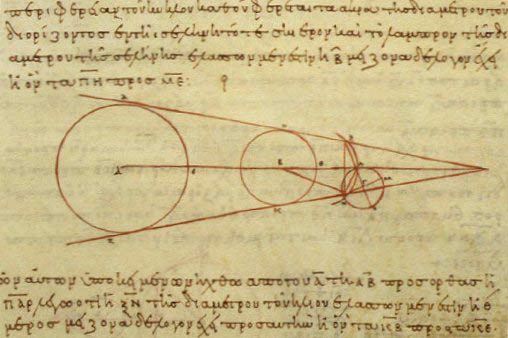Greek astronomy

Aristarchus's 3rd-century BC calculations on the relative sizes of (from left) the Sun, Earth and Moon, from a 10th-century Greek copy.
Unlike the Babylonians and Egyptians, who observed the heavens primarily to keep track of the seasons, the Greeks approached astronomy from a much more fundamental and theoretical viewpoint: they wanted to know the basic nature and makeup of the universe.
Early theories about the Earth, Moon, Sun, planets, and stars were put forward, beginning in the 6th century BC, by Thales, Anaximander, Anaximenes, Pythagoras, and Anaxagoras. By the time of Eudoxus (408–355 BC), a standard Greek cosmological model was in place with Earth at the center of the universe surrounded by a series of concentric spheres holding, in order of increasing distance, the Moon, Mercury, Venus, the Sun, Mars, Jupiter, Saturn, and the stars. Eudoxus, Heraclides, and Callipus developed this idea further. It was opposed by Aristarchus, who put forward the first genuine heliocentric scheme; however, the Sun-centered cosmos was never embraced by the Greeks, partly because the great philosopher Aristotle, about 50 years earlier, had "proved" by many philosophical arguments that Earth must be central. Important observational work was done by Aristarchus, Eratosthenes, and Hipparchus, which began to reveal the scale of the Solar System and to catalogue accurately the positions of stars.
Around 125 AD, Ptolemy, a theorist living in Alexandrian Egypt, summarized Greek astronomical knowledge, including the geocentric theory, in a book called (by the Arabs) the Almagest (see also Apollonius). After Ptolemy's generation, the ancient civilizations began to decline. Astronomy came to a halt in Europe with the fall of Rome and not for another 1,400 years would the Ptolemaic system be seriously challenged.


